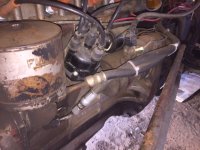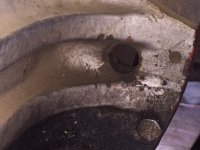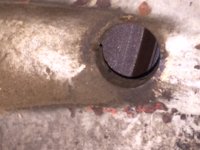Cedarsnapp
New member
I want to time my 1965 MF 135 with Z145 gas engine. I removed the timing mark cover, hooked up my timing light to the battery and to the #1 spark plug wire and aimed it into the timing mark hole. I can see the fixed mark on the crankshaft cover, but nothing lights up on the crankshaft. I know with older cars I would put chalk on the crankshaft timing marks so I could see TDC and the before and after TDC marks when the timing light illuminated them. I twisted the distributor by "sound" but it's not perfect and it occasionally misses. Are there TDC marks on the crankshaft? Do they normally need to be chalked to be visible?
The attached photos show the distributor and in the lower right of the engine, the timing mark hole, plus two closer shots of the timing mark hole.
Does anyone have any suggestions how to find and mark the crankshaft timing marks to make them easy to see with the timing light. I haven't timed an engine for decades and may have forgotten an important step. Thanks.



The attached photos show the distributor and in the lower right of the engine, the timing mark hole, plus two closer shots of the timing mark hole.
Does anyone have any suggestions how to find and mark the crankshaft timing marks to make them easy to see with the timing light. I haven't timed an engine for decades and may have forgotten an important step. Thanks.


